National Hispanic American Heritage Month (September 15-October 15) started off strong with the Chicago Humanities Fest’s Pilsen Mural Tour, following last spring’s other insightful, invigorating neighborhood tours. Local muralist Sam Kirk walked a lively group of enthusiasts for a stroll around Pilsen during one of the city’s last warm weekends, sharing her own work plus history about Chicago’s lush street art movement. (Just like prepared parents, the CHF organizers also pulled a wagon of cold water and snacks behind the sweaty hikers.)
Street art starting emerging around 18th Street in the 1970s to address social injustice, gentrification, and segregation of the Latinx community, Kirk explained as she led the group to a 16th Street railroad viaduct, a noisy BNSF hitching location, to show a line of indigenous faces.
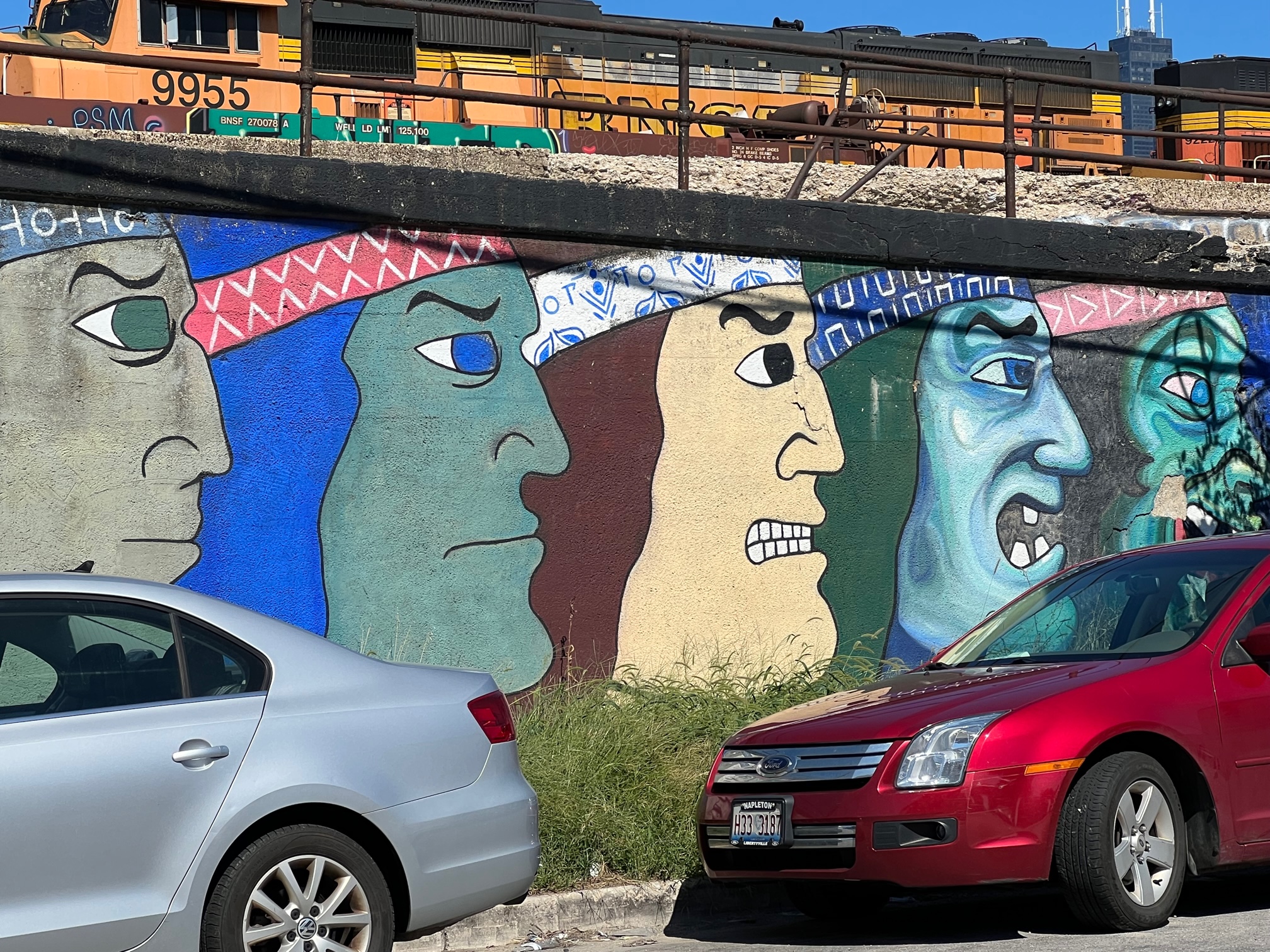
The “Galeria del Barrio” mural was painted in 1976 by Aurelio Diaz with the help of local school children. The long, colorful row depicts 22 Latinx and biracial men facing east, wearing headbands and imparting a variety of emotions.
Kirk was recently asked to restore the mural, and was able to contact some of the kids who originally worked on the piece to assist. Some now-adults brought photos of the original to help with the repainting. Kirk added that the railroad doesn’t repair walls, so artists also often have to do significant surface preparation in addition to painting.
The next stop was Kirk’s 2016 co-production with Sandra Antongiorgi, a collection of global women’s faces, our “elders and ancestors.” She was moved by the tension following the 2016 Pulse nightclub shooting, and wanted to create something to celebrate women (and representation really does matter, as a trio of Black women were using the mural as a photo backdrop during the tour).
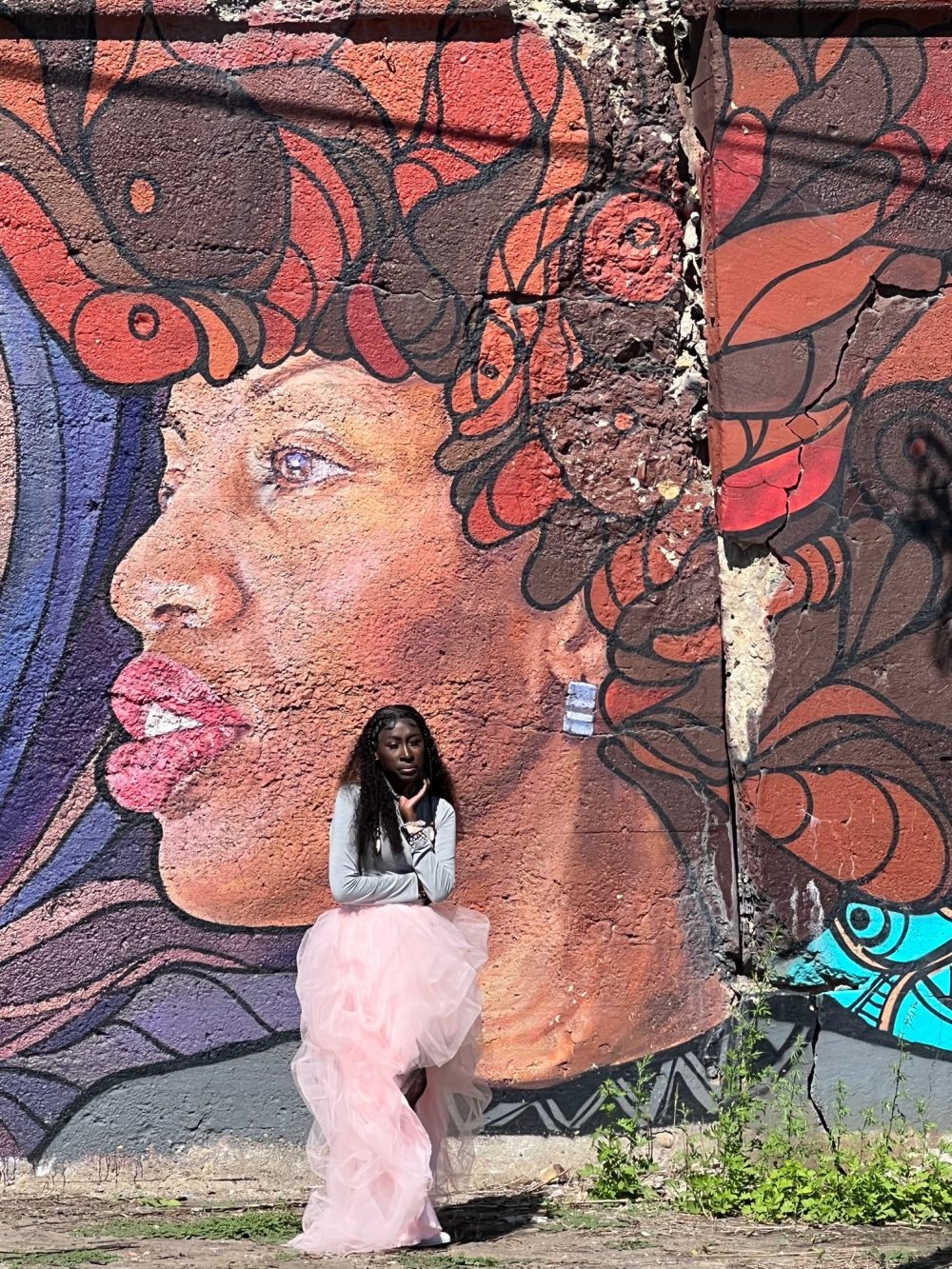
Kirk explained she primarily used acrylic paint, then black spray paint to outline the faces. She said that the entire process took about two months to paint since the surface was quite porous and rain made the wall leak.
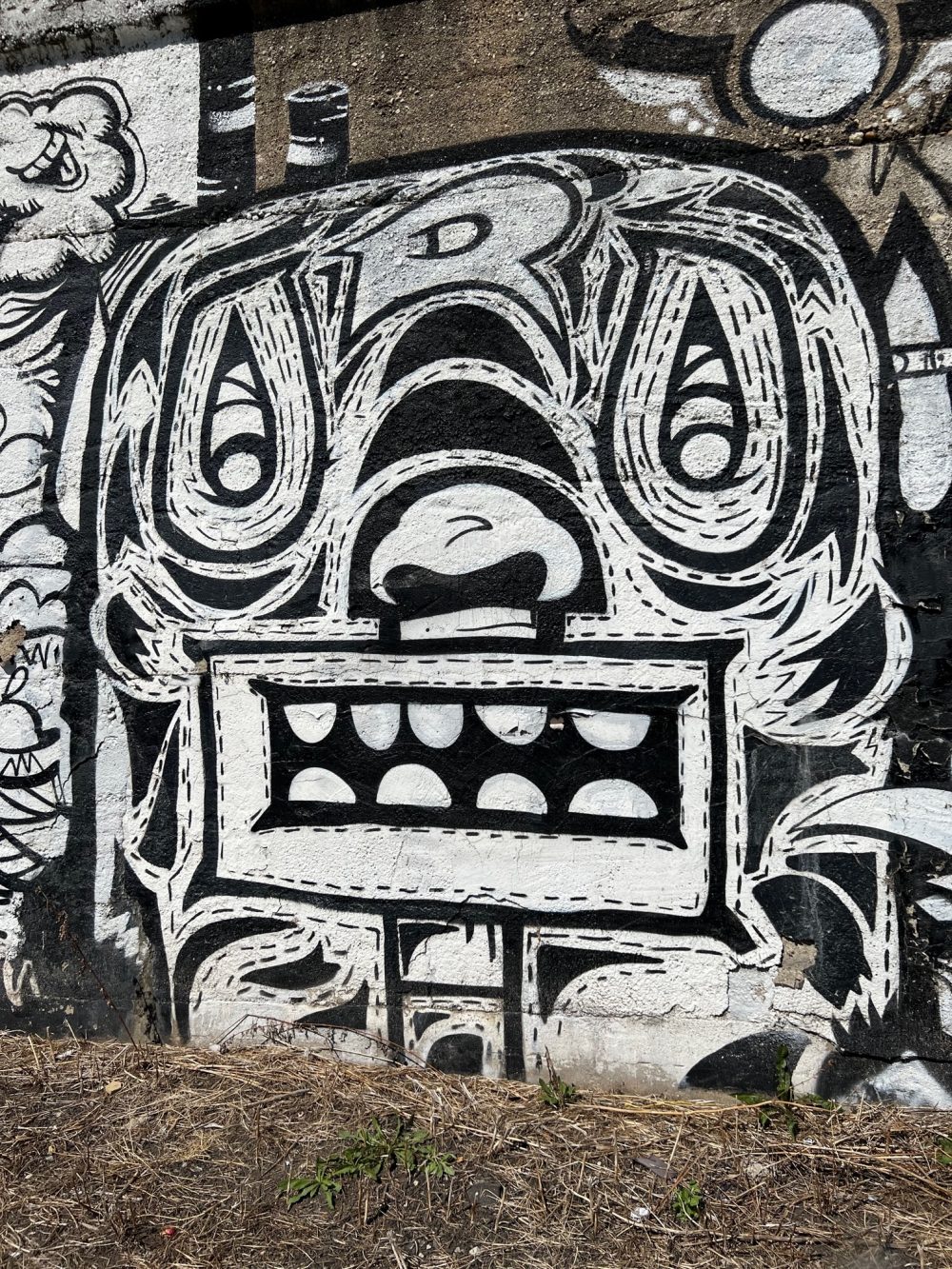
Montreal’s Projet En Masse collaborated with artists across the globe to create a mostly spray-painted black and white mural (maybe stop by the 2d Restaurant afterwards for a fully immersive B&W experience).
Salvador Jimenez’s 2009 “Declaration of Immigration,” a two-story mural at 1401 W. 18th Street, continued the unadorned message of equality and justice.
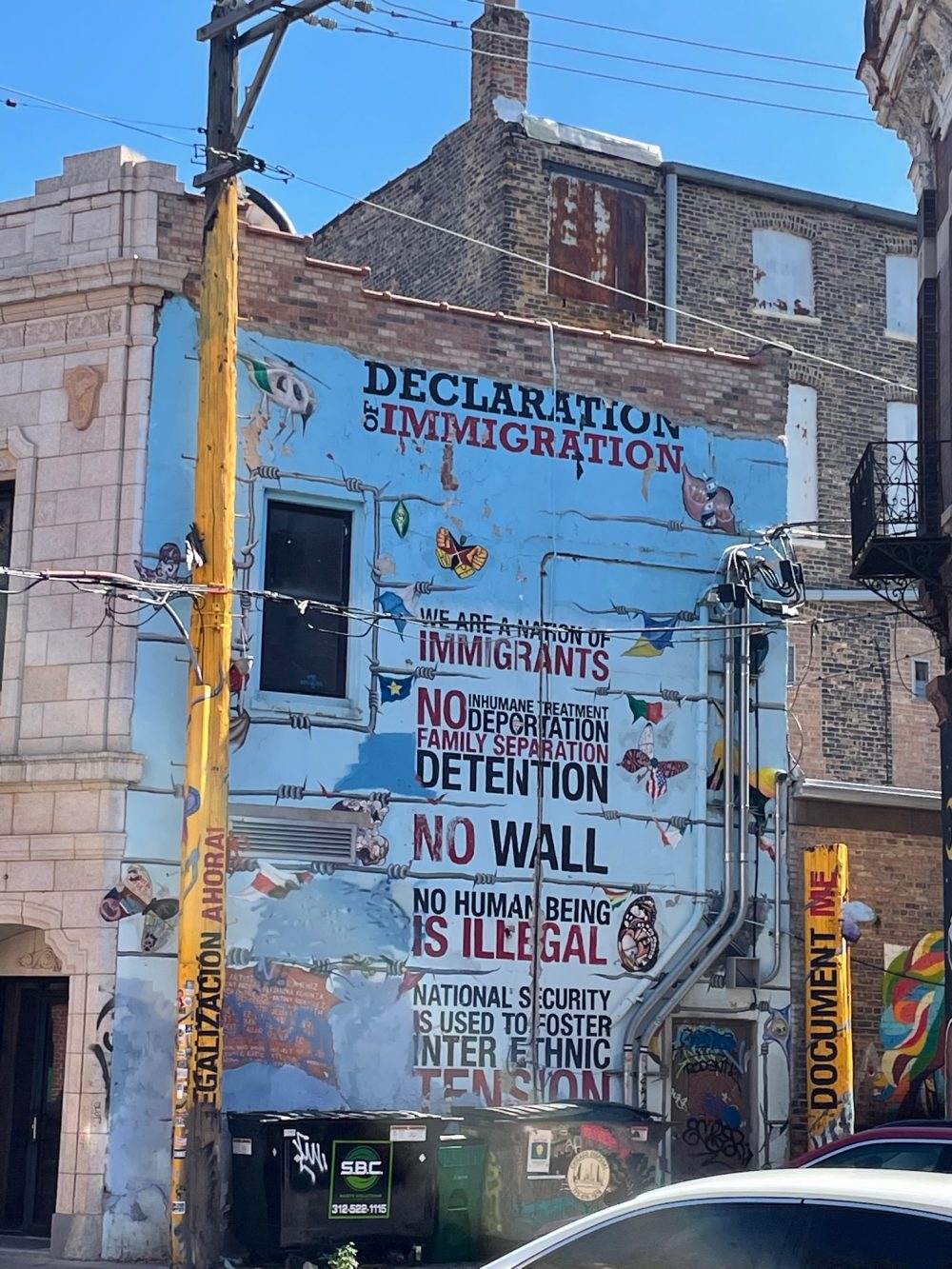
Pilsen is known for murals in alleys and parking lots, not just on busy streets. Mauricio Ramirez spray-painted pixelated figures, and Caesar Perez, aka Czr Prz, added a cellist.
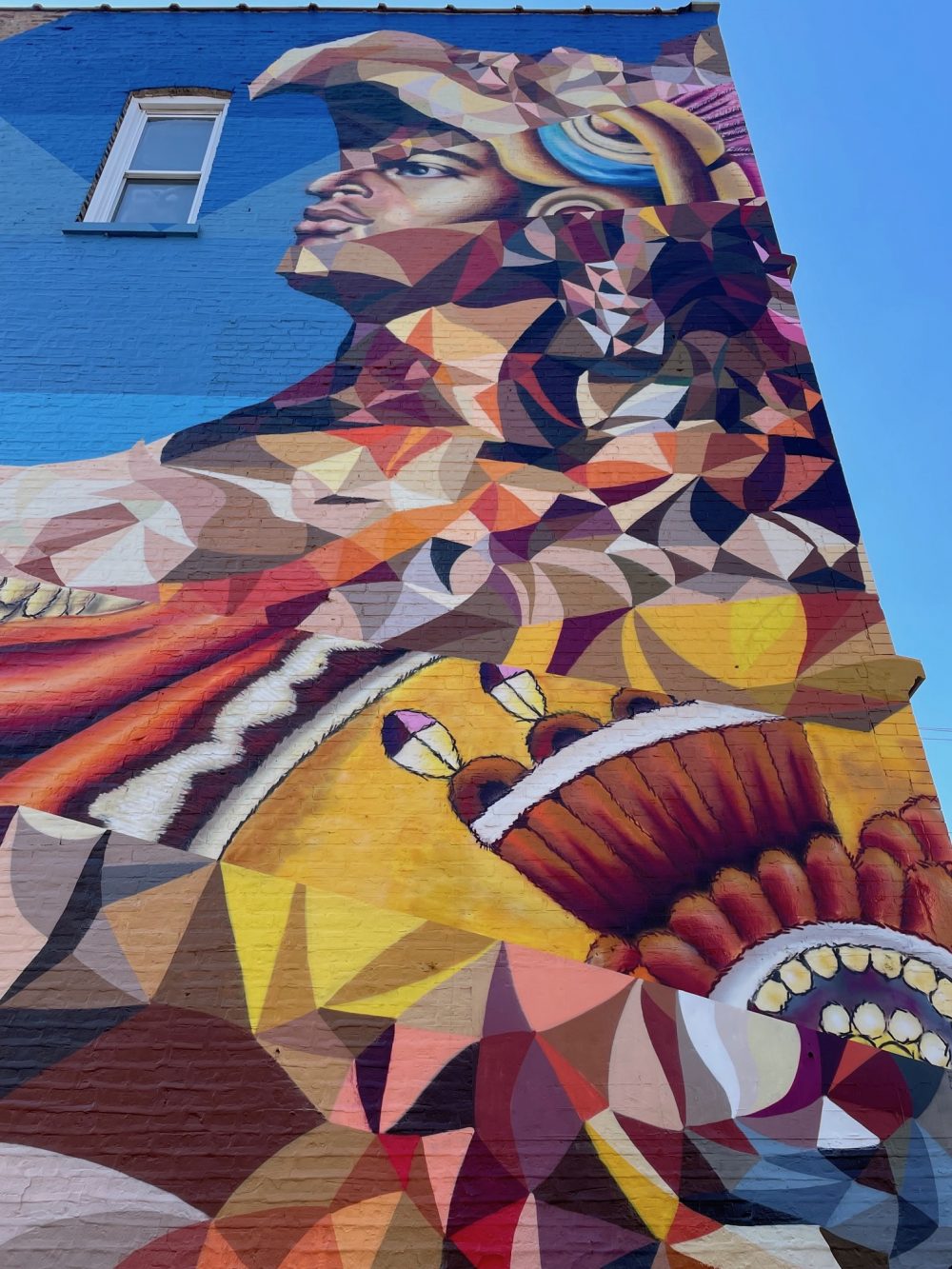
In 2021, Kirk created the “Fierce” pride mural because she wanted more LGBTQIA+ representation than what is mostly represented in Chicago’s Lakeview neighborhood. She wanted to share stories, “#provokeculture,” and create dialogue on important queer issues in her particular community.
She shared the process of mural project creation, including commissions and personal projects, how to shepherd proposals and to find corporate sponsorship (she worked with Effen Vodka on “Fierce”). Kirk also talked about adding an anti-vandalism protective coating to keep her work intact as long as possible. She said that the clear coating is expensive at $150 a gallon (and she used four, another reason to pursue sponsorship), but any added graffiti can be quickly washed off with soap and water.
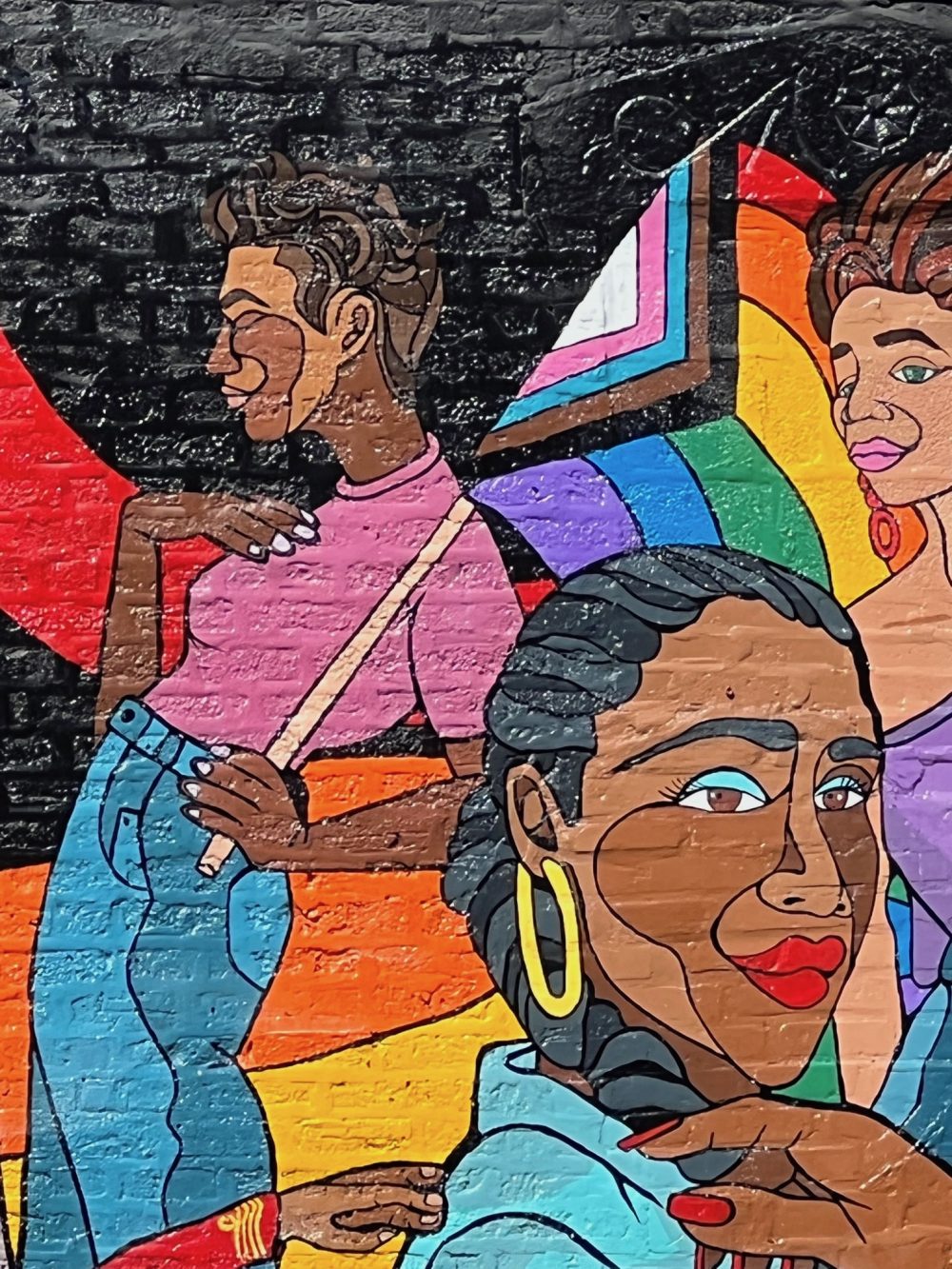
Watch a short video about that project’s creation here. Due to the transitory nature of many outside projects, Kirk builds video and photo documentation into her work, and collaborates with students at Luv City Media to shoot and edit some pieces. Kirk also creates programs for school art teachers with art organizations like I Paint My Mind.
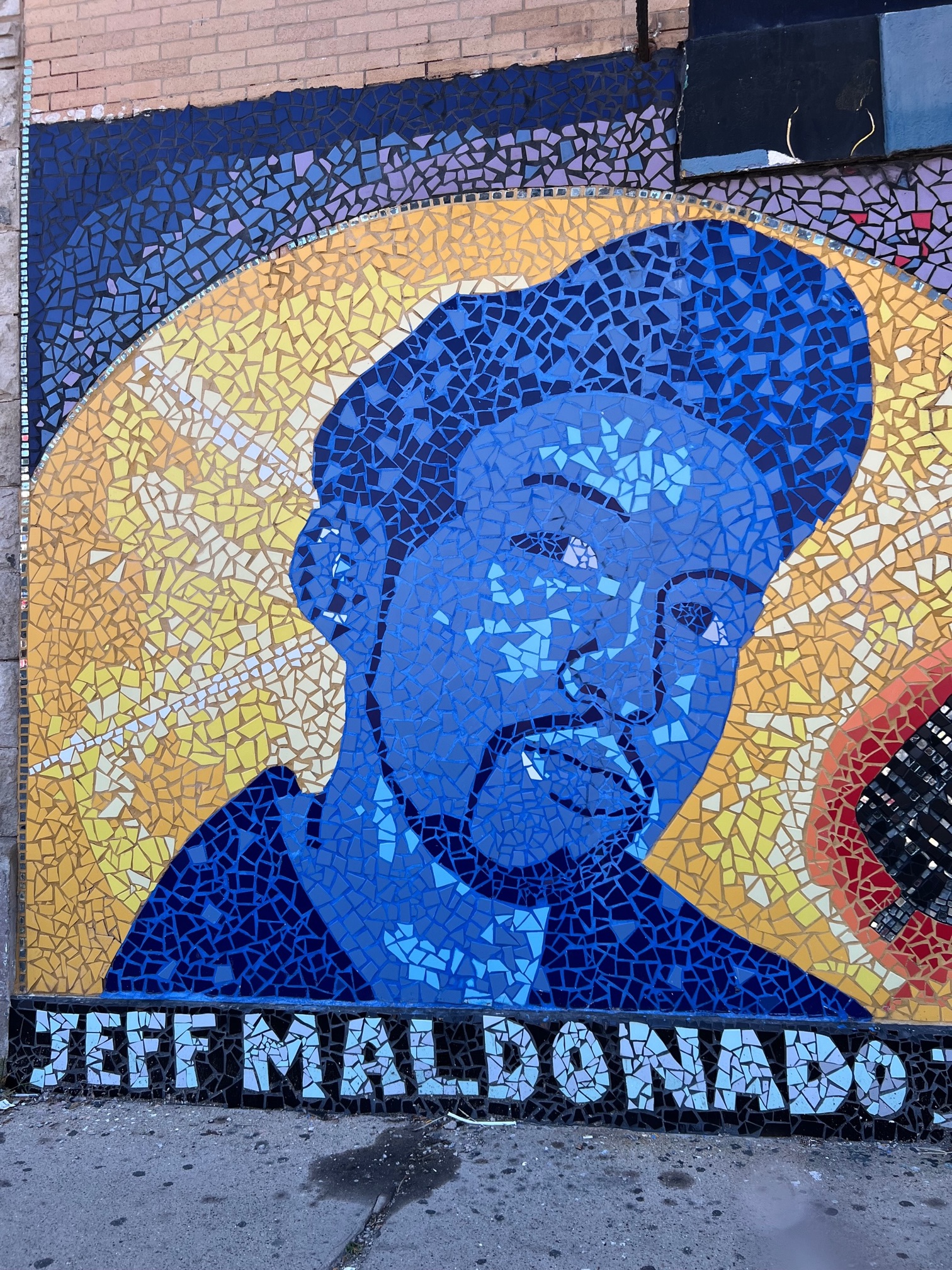
At the corner of 18th and Ashland is a row of bright, glittery mosaics to commemorate the violent death of Jeff Maldonado. Around the corner is the 18th Street Pink Line stop, not only a good way to access these several blocks of murals, but also home to the final stop on the tour. In 1998, Francisco Mendoza and youth from a Gallery 37 art program painted colorful murals throughout the station, including on the step risers, depicting Mexican heritage symbols.
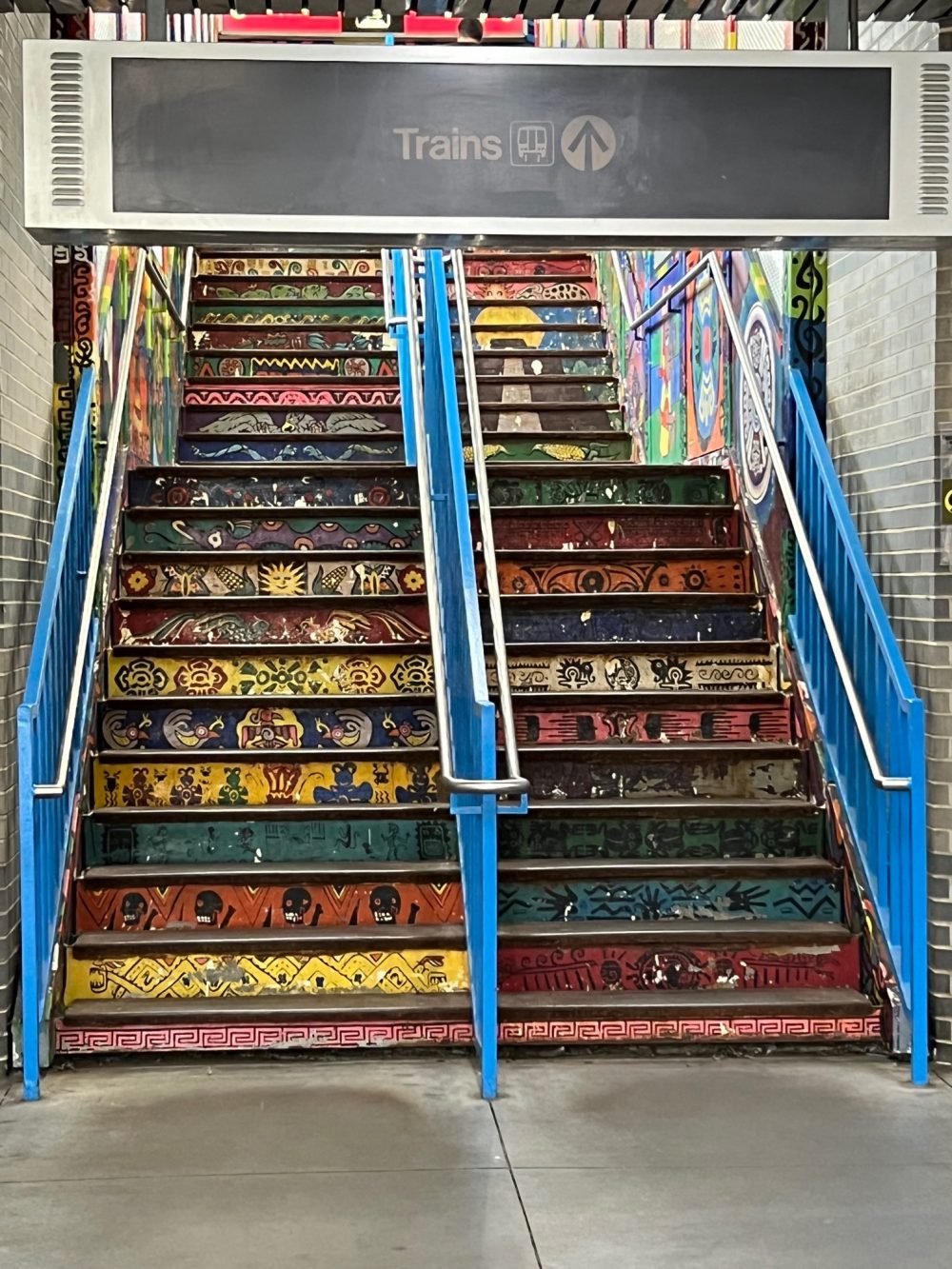
When visiting Pilsen, also take an art workshop or class at the Pilsen Arts Community House, and/or venture west to see Pilsen street artist Sentrock’s exhibit “The Boy Who Wanted to Fly” at the Elmhurst Art Museum through January 15. Also see our feature on the CHF South Shore trolley tour. Watch the WTTW documentary “Chicago by L” to glimpse the rich history in all of Chicago’s neighborhoods too. Then check out CHF’s autumn programs:
Rick Lowe on the Transformative Power of Art on 10/22
Chicago Performance Artist Jefferson Pinder on 10/29
Art of the Short Story with George Saunders on 10/29
A Screening of Charlie Chaplin's THE KID with live musical accompaniment on 11/5
A SERIES of conversations and an after party -- The Verge & Bit Bash on how big tech impacts our world on 11/12
A forum on Chicago's Public Spaces on 11/29
Did you enjoy this post and our coverage of Chicago’s arts scene? Please consider supporting Third Coast Review’s arts and culture coverage by making a donation by PayPal. Choose the amount that works best for you, and know how much we appreciate your support!
